Sapphire Radeon R9 290 Tri-X OC Review: Our First Custom Cooled 290
by Ryan Smith on December 24, 2013 3:45 PM EST- Posted in
- GPUs
- AMD
- Radeon
- Sapphire
- Radeon 200
Gaming Performance
Diving into our performance benchmarks, we’ll be running light on the commentary here due to the fact that there’s really not much to say about the gaming performance of the 290 Tri-X OC. Sapphire’s 6% core overclock and 4% memory overclock translates into a real world performance difference of 3% on average. This makes the 290 Tri-X OC a bit faster than a reference 290, but it doesn’t otherwise change the relative rankings of various cards. At most this slightly extends the lead over the GTX 780 to 9% and wipes out the 290X quiet mode’s marginal lead over the 290.
In the end the difference is slight enough that the bulk of the interest in this card should rightfully be on the card’s cooler, and ultimately whether that cooler justifies the $50 premium.

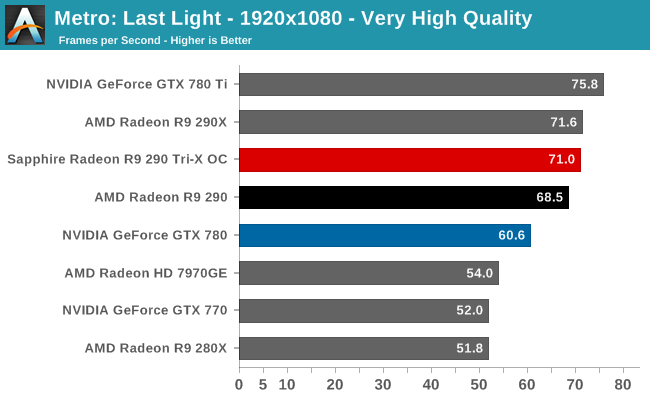
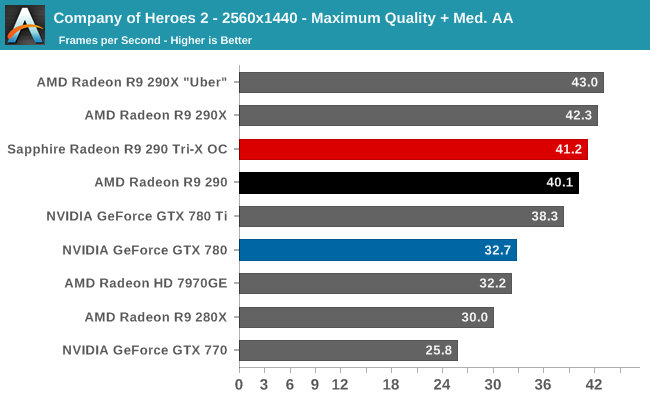
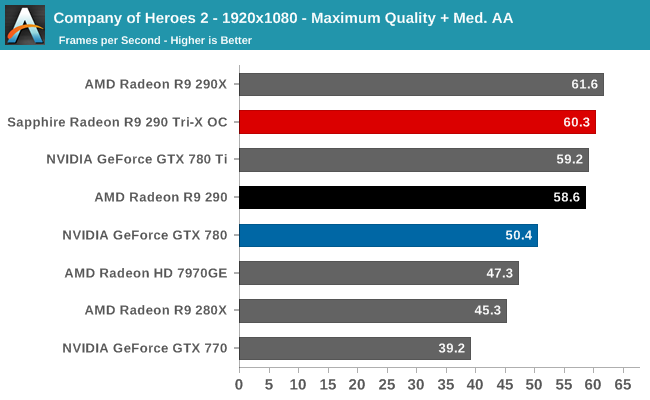
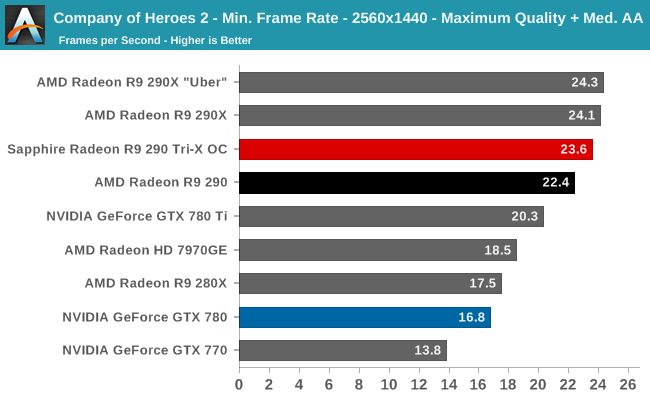
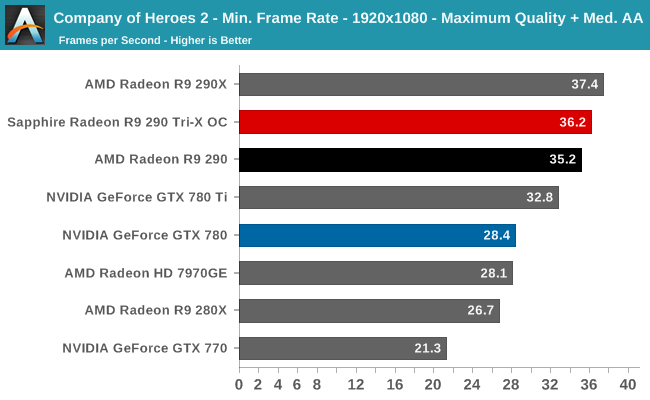
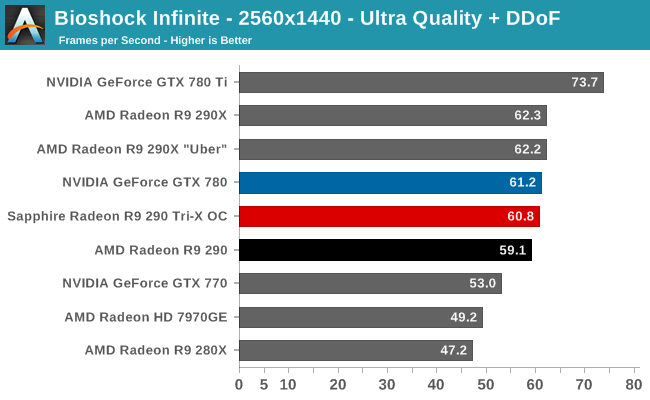
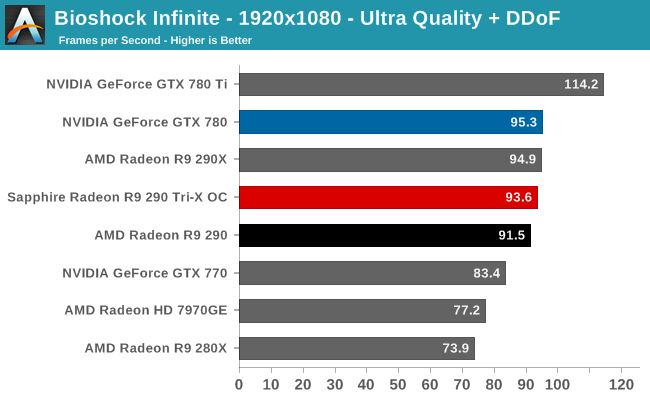
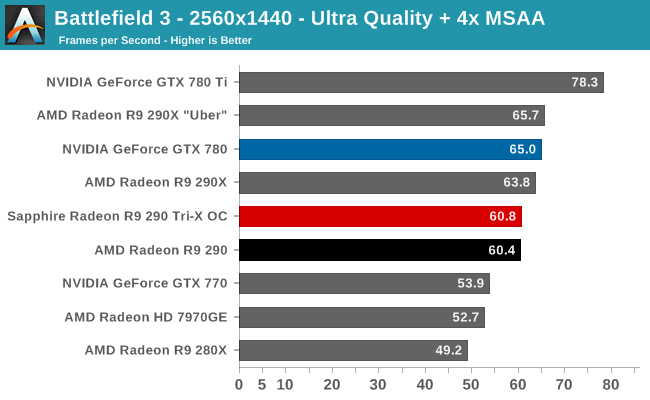
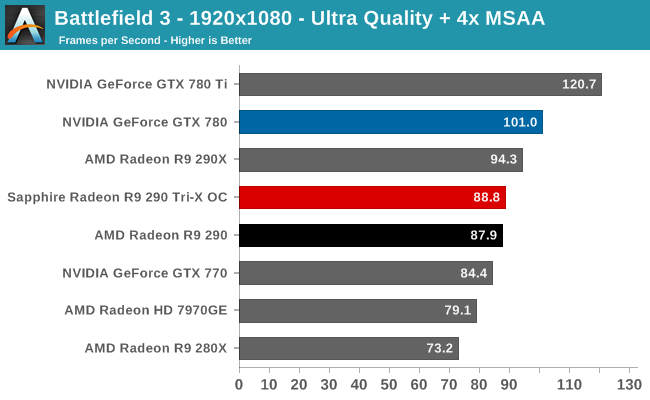
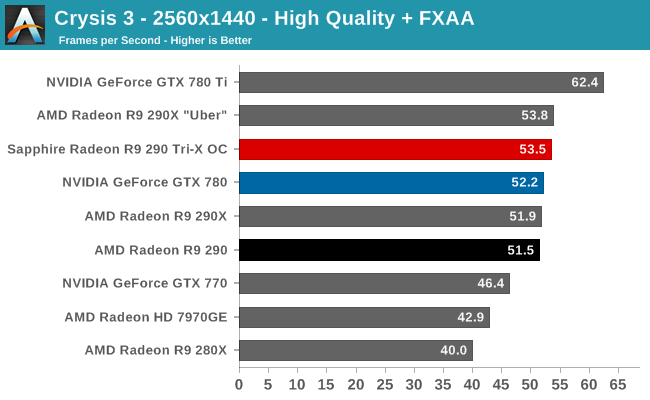
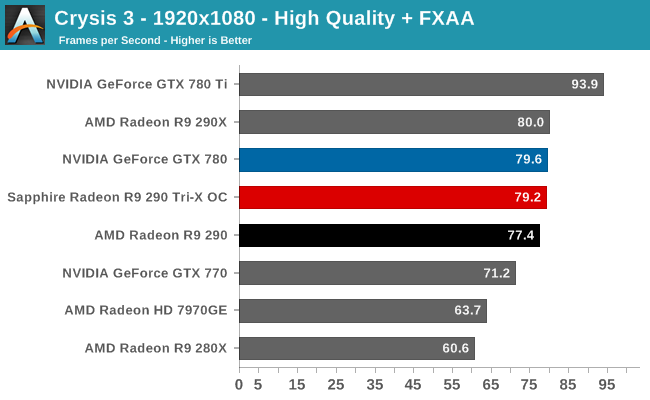
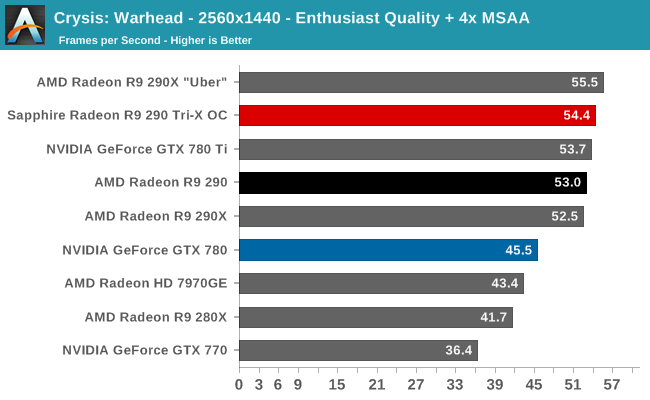
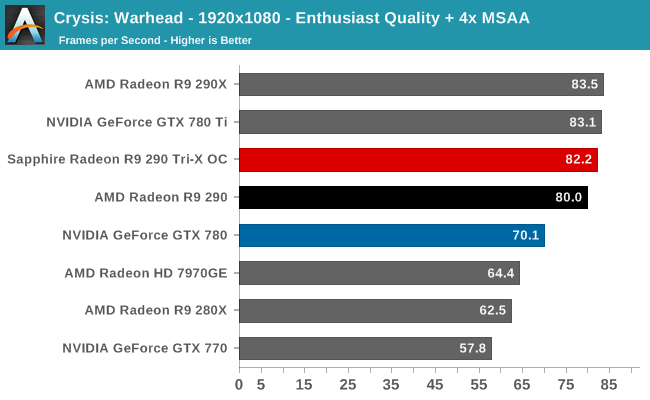
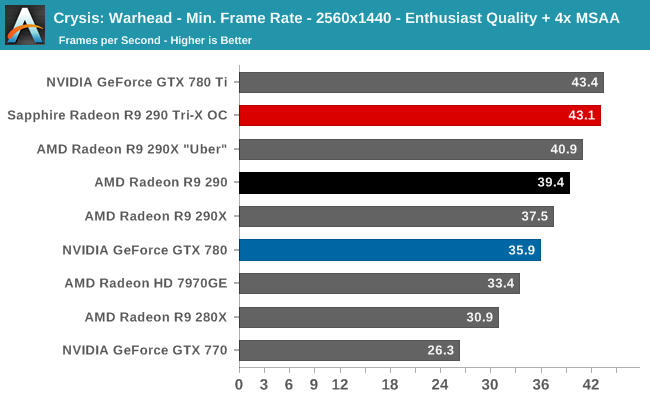
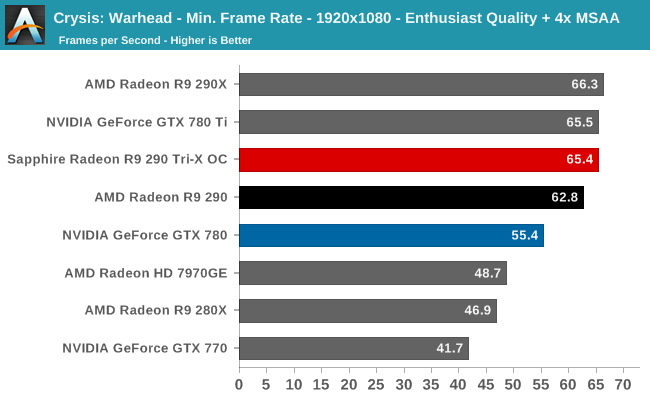
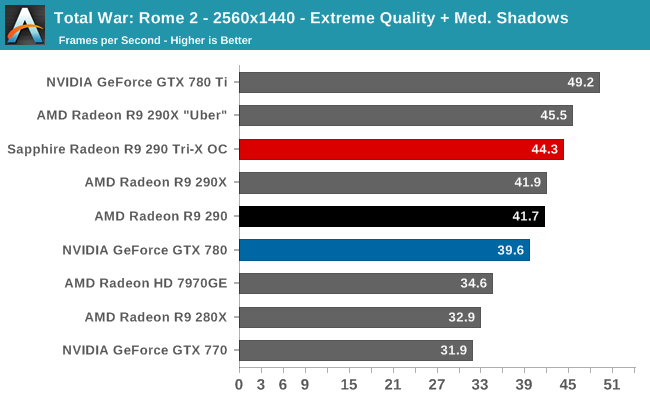
On a quick note looking at Rome, as one of the games the 290X throttles in the most, this is also the game where the Sapphire 290 Tri-X OC takes the largest lead over the 290X. The 6% performance lead here reflects on the fact
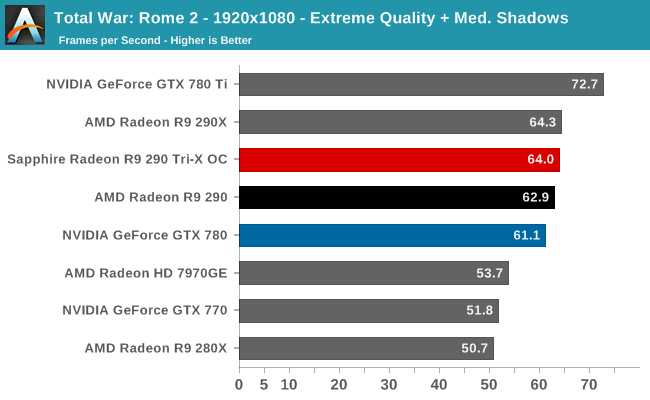
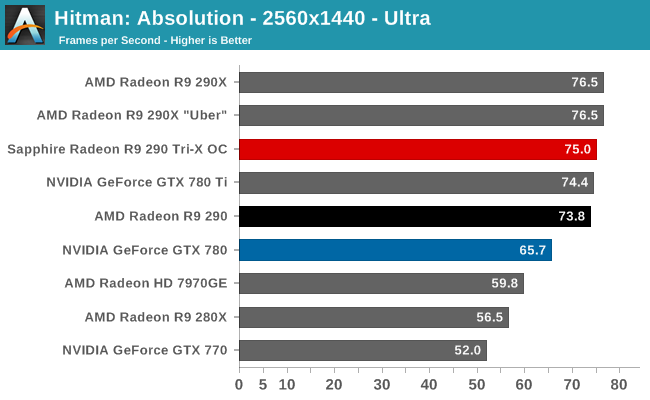
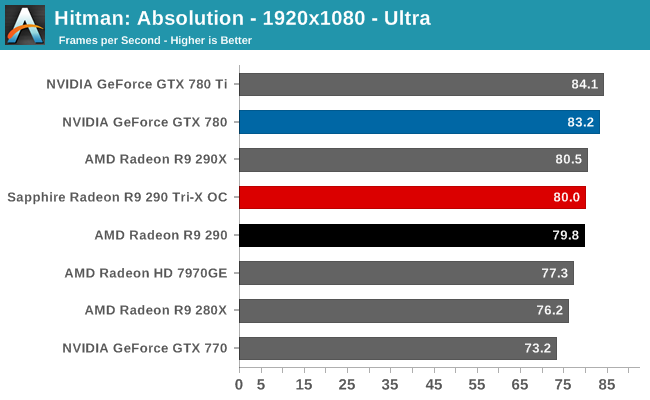
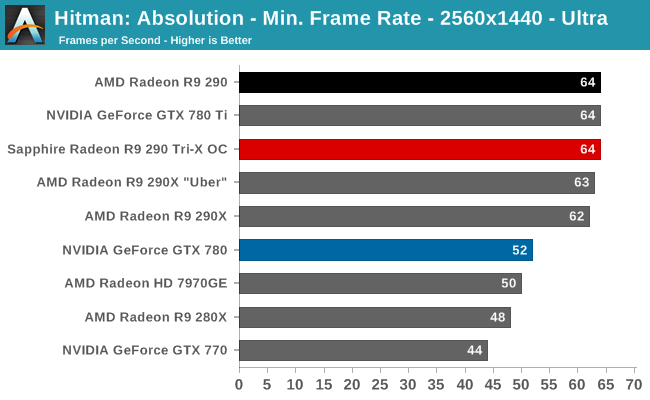
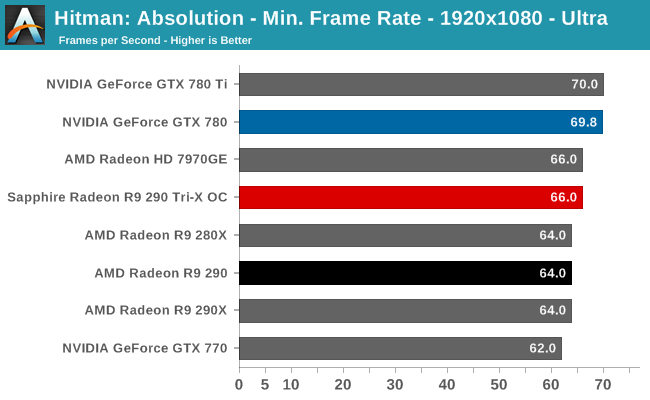
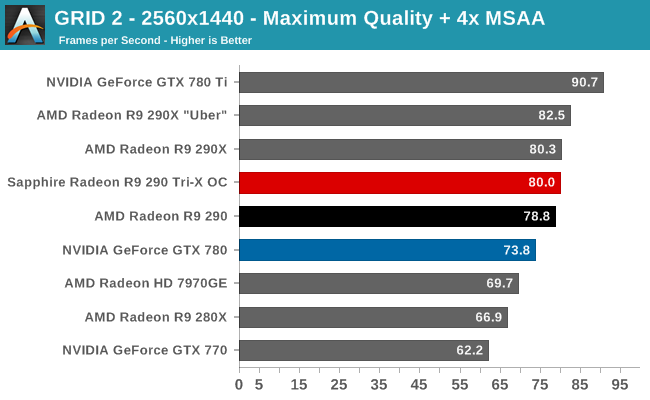
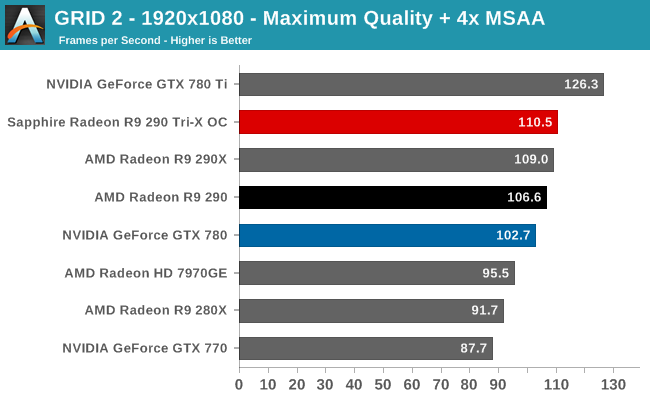










119 Comments
View All Comments
skiboysteve - Thursday, December 26, 2013 - link
I had that even worse. Card would crash in Diablo 3 from overheating. Case was super hot and GPU fan was pegged on high. I sold it (6850) and bought a GTX 660 because it had a blower, now its quiet and cool.Th-z - Wednesday, December 25, 2013 - link
Thus the problem lies, people like small form factor these days. Open air cooler can complicate how the air is moved. Take the beta Steam Machine for example, the GPU is in a chamber that uses riser to reduce the size of the case. The design is simple for a blower cooler, the air basically moves one way all the way. If it's an open air cooler, both hot and cool air are intermingling, additional fans would need to help moving the air, and air path would also need a redesign.I agree with Ryan, AMD simply needs to do better job with their reference cooler, perhaps their AIB partners can step in and make their own blower cards that perform better than AMD's reference design.
Ryan Smith - Thursday, December 26, 2013 - link
I had originally intended to put the following discussion about blowers versus open air coolers in the article, but it came off as too disjoint from the rest of the article so I dropped it. But since you’re asking, I’ll publish it here in the comments.---
When looking at the cooling performance of the 290 Tri-X OC relative to the reference 290, it’s important to keep in mind that the Tri-X OC’s cooling advantages don’t come for free; there are tradeoffs to be made for achieving this kind of performance. At the risk of sounding like a broken record, open air coolers can be very high performance solutions, however there are some important differences between open air coolers and blowers that need to be taken into consideration.
Between the two types of coolers, blowers are the more compatible and more self-sufficient due to the fact that the blower design is essentially self-exhausting. By blowing hot air directly outside of the chassis, blowers aren’t significantly reliant on the chassis cooling, meaning they’ll work in a wide variety of cases and environments, especially small form factor designs or multi-GPU setups. The one downside to blowers is that the limited amount of space available to funnel air (about 1 PCIe slot’s width) requires that all of that airflow is generated by one fan, which in turn may have to run at a relatively high speed to move enough air. The end result being that while blowers don’t have to be loud, they’re generally louder than open air coolers.
Open air coolers on the other hand essentially punt on the issue of cooling, focusing solely on removing heat from the GPU and related components, and making removal of that hot air the job of the chassis. This allows open air coolers to utilize numerous large, slow fans that can move a good deal of air without generating a lot of noise, but only a small portion of that air is exhausted outside the chassis by the open air cooler itself. The bulk of the work for removing heat from the chassis falls to the chassis itself, which can be beneficial as chassis fans are larger and quieter still, potentially making the combined solution a very quiet own.
When it comes to open air coolers the drawback here two-fold. The first is simply that open air cards need breathing room; even though most cards are only two slots wide, the slot adjacent to the card needs to be kept complete open in order to permit airflow (even a small card like a sound card would still be an issue). The second drawback is that if the chassis can’t handle the heat load – and keep in mind that a single 290 under load is going to generate more heat than the rest of the system combined – then open air coolers will struggle to work well while at the same time the heat from the video card will have a run-on effect that makes it hard to properly cool the other components in the chassis.
Because of the compatibility and self-reliance aspects of blowers, blowers are the coolers used on most high-end reference cards, as the design allows for the reference card design to be used in the widest range of systems. In that sense blowers represent a nice middle ground between functionality and noise, with a high quality blower capable of bringing all of that functionality without bringing too much noise. NVIDIA’s GTX Titan blower being a good example of what a blower is capable of at the high end, while the reference 290 is an unfortunate example of what a blower looks like if it’s struggling to keep up. On the other hand an open air cooler can scale up better while still maintaining very low noise levels – as exemplified by cards like the 290 Tri-X OC and the Radeon HD 7990 – but the compatibility issues mean that the resulting cards can’t be used as in wide a range of systems, something that can be problematic for reference cards.
In the end however there’s a need for both kinds of coolers to be on the market. As neither style is without its flaws, having the two vastly different designs allows for a wider range of market coverage than what either cooler alone could accomplish.
Jwboo65 - Monday, December 30, 2013 - link
Typo in the third paragraph. The very last word. Nice article. Thanks Ryan!Wade_Jensen - Wednesday, December 25, 2013 - link
Would someone be willing to explain binning? I hear Anand and Ryan and Ian talking about it surrounding CPU and GPUs scaling but its never explained. But how is it accomplished and/or caused in manufacturing? Is that how intel has differing performance in an i5 and i7 of identical tdp, HT aside?Yes, I've tried Google. :p
sheh - Wednesday, December 25, 2013 - link
Take a million chips, run them through test equipment to collect data on voltage, heat, max frequency, functionality of cores/subunits. Sort them according to the results, do any external tweaking if needed (e.g., I think old CPUs has things like resistors on the package to disable/limit features), print the correct model number/put on the sticker, sell.Sunburn74 - Wednesday, December 25, 2013 - link
Essentially, if you manufacture 100 chips with target level of perfomance X, some will exceed target level of performance X, some will just barely reach it, and some will underperform and not quite reach the target.As the supplier, you bin/plan to sell the overperformers as your highest level product (ie gtx 9000 OC uber ultra TI lightning thor odin card), your on target performers as some mid range product (gtx 8950), and your poor performers as some lower range product (gtx 7000 energy sipper)
Its more complex than that in the real world as intel/nvidia/amd offer a large multitude of products, but in a nutshell that's binning.
Sunburn74 - Wednesday, December 25, 2013 - link
BTW, this also explains why the best overclocking products generally tend to be on the higher end of the product spectrumWade_Jensen - Wednesday, December 25, 2013 - link
Thanks guys! :)gonks - Wednesday, December 25, 2013 - link
Ryan, there's a typo on the gaming charts and oc charts, on the headers says "Maxium quality".Great review btw!